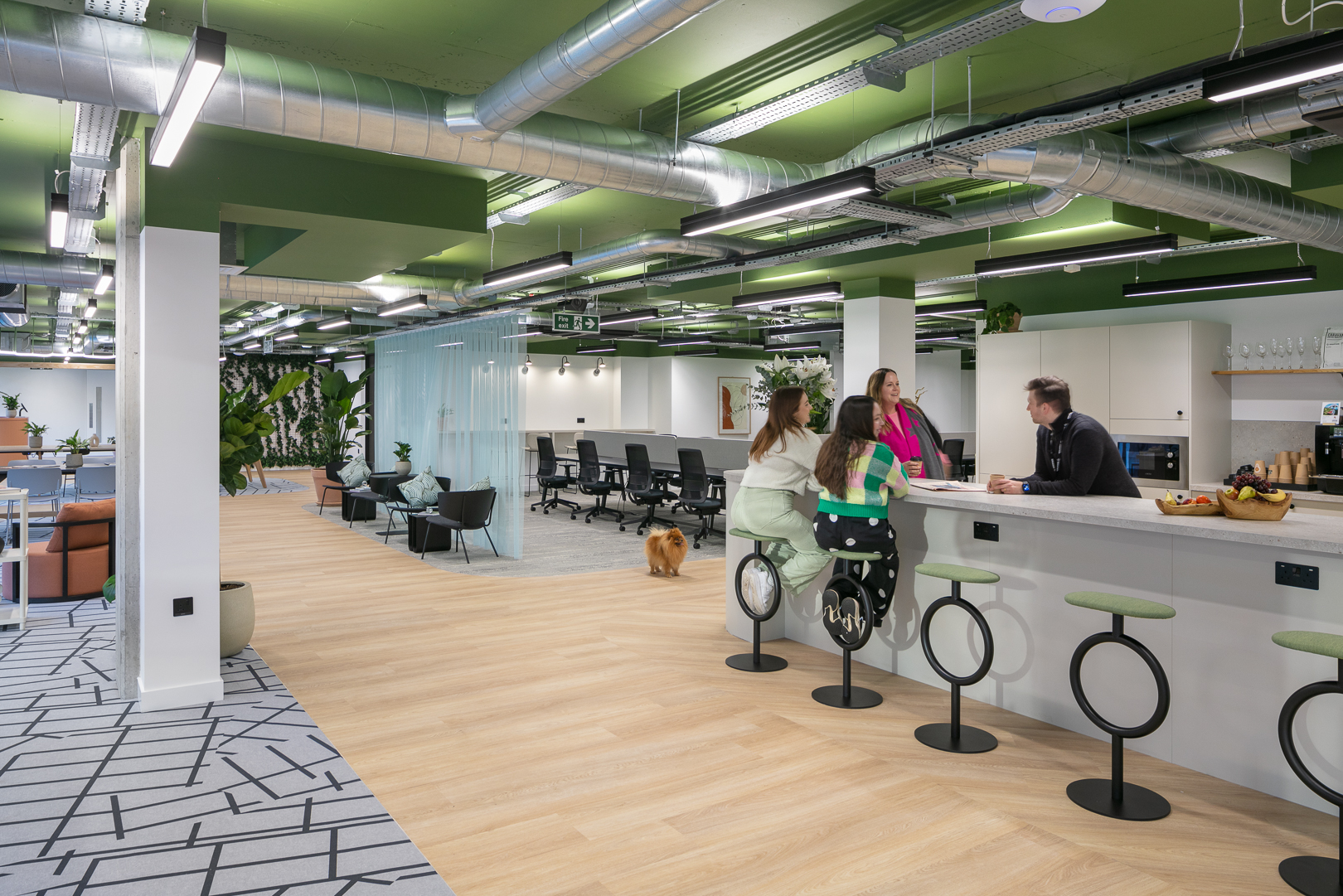
Does Remote Working Increase Productivity? What We Know in 2024
Until a few years ago, remote working was a pipe dream for many people. Sat in the office, wishing you could be at home, a boujee cafe, or better still, on a beach.
Then, the pandemic hit and many of us were dropped into working from home with little to no preparation. What followed was a lot of adoption–Zoom, Teams and Slack were installed at record rates as businesses hoped to master remote working productivity.
Now businesses and employees have had time to evolve, what is the state of remote working today? Does it increase productivity, or is it a way for employees to get more chores done and avoid small talk?
Whether you’re fully remote or a hybrid worker, this article will give you useful tips for getting the most out of your time away from the office, ensuring you’re productive without negatively impacting your personal life.
Flexible working is the new norm
You might think it was down to the COVID-19 pandemic that working remotely exploded. And yes, that’s had an enormous impact.
However, the desire and ability to work remotely have been in play much longer. A Stanford University study found that remote working rates have doubled every 15 years, with researchers Barrero, Bloom, and Davis sharing their thoughts that this will continue to grow.
However, most businesses and employees seem to have found a happy medium––hybrid working. Fusing office time with the flexibility of working remotely. According to recent data, only 14% of people in the UK are working remotely, while 26% are hybrid.

What is ‘productivity’ anyway?
The problem with assessing productivity is that it’s a relative term. Most businesses will assess productivity in varying ways and every job role has different duties, so assessing productivity is different here, too.
With so many variables, it can be challenging to assess datasets and most of the time, it simply comes down to the opinion of who you ask.
If we take another look at that Stanford University report, you’ll see that perception becomes a problem when assessing productivity. Why?
- On average, workers think they are around 7% more productive working from home.
- Managers, on the other hand, think productivity is around 33.5% lower.
However, studies on remote work productivity suggest 10% of people think they will automatically be viewed as less productive and lacking in commitment if they work from home. This counteracts the manager’s negative view of productivity, suggesting it’s just an assumption.
Do you see how personal opinions can cloud judgement and sway statistics? This makes deciding who’s right about the productivity of remote workers challenging.
Remote working performance levels, according to research
Pre-COVID
In 2019, as little as 6% of people worked remotely, with around 75% having never worked remotely before. However, when the COVID-19 pandemic kicked in, businesses had little choice but to adapt, with 47% saying they had to make changes on the go and 57% of employers having to shift to remote or hybrid because of COVID. If they didn’t, they risked having to furlough employees and huge financial losses that would have been challenging to come back from.
Post-COVID
Since the pandemic, most people have become much more accepting of hybrid and remote working. A study by Owllabs found that 66% of respondents were back working in the office full-time. This is likely due to many political figures and business leaders trying to get people back in the office with 85% of leaders saying it’s hard to be confident that hybrid employees are productive.
But, the appetite for remote work isn’t dwindling among employees, with 35% of workers who can work remotely choosing to do so all the time and only 22% of those employees who are back in the office saying they want to be.
Although the levels of people working remotely are nowhere near pre-COVID levels, they have hit a plateau in recent times. So, although working remotely is way more acceptable and around 65% of businesses think working remotely is here to stay, don’t expect the number of people working remotely to increase.
Interestingly, opinions couldn’t be more divided when discussing remote working productivity. When asked if teams were more or less productive when working remotely or hybrid, 32.9% said more productive, 38.06% said less productive and 29.03% said about the same.
Do you still see how the data really isn’t that clear and can’t give a definitive answer about remote working productivity?

Remote working vs being in the office
Ok, we’ve established that employees love working from home, but leaders aren’t so sure of its success in terms of productivity, and that debate is going to rage on.
To weigh up the real impact of working from home productivity, we need to consider a few other elements that indirectly impact that productivity.
What makes remote workers more productive?
Positive impact on family life
People are better able to juggle family and professional life, freeing more time to focus on both roles.
Physical health improvements
Long commutes are linked to health problems such as increased stress, high blood pressure and BMI as well as making less time for physical activity.
Increased motivation
Giving employees trust and autonomy can improve motivation, overall well-being and life satisfaction.
Happier people
People who work from home are happier, and Oxford University says that makes them 13% more productive.
Reasons why remote working might hinder productivity
More likely to work when sick
Without a workplace to go to, more employees are working when they’re sick, which you’d think would make them more productive, but a sick person isn’t going to be performing at their peak.
Loneliness and lack of communication
One of the biggest challenges for keeping remote workers engaged is tackling loneliness. With a lack of meaningful communication, loneliness can take over and productivity will tumble.
How to inspire and manage productivity of remote workers
Getting remote work right doesn’t mean handing out laptops and letting people log in from home. For remote work to actually work, employers need to be intentional about managing the productivity of remote workers and finding ways of working that suit the business and employees.
Whether you choose fully remote, hybrid working or to not have an official HQ and work from co-working spaces, you’ve got to actively create an environment where working from home productivity can thrive because of the processes you’ve put in place.
1. Find a balance between office time and working from home
Some tasks are just easier in person—like brainstorming or group discussions – while working from home offers the peace and quiet to focus. Opting for a hybrid working strategy encourages your team to use each setting in a way that works for them and the tasks at hand, keeping things flexible so they can benefit from both is positive for the business and the employee.
2. Don’t micromanage
Hovering over your team’s every move doesn’t help anyone. Instead of micromanaging, focus on what ends up getting done. Let your team figure out the best way to manage their tasks. You’ll find people work better when they don’t feel like they’re being watched all the time.
3. Understand common challenges
Remote work isn’t all sunshine and flexibility. It can be lonely, distracting or just plain tricky when juggling home and work life. Take a moment to find out what’s slowing your team down. Is it something as simple as time zone issues or maybe just a lack of routine? Sorting these out can make a big difference to how smoothly things run.
4. Set productivity standards
Make sure everyone knows what’s expected from them, without any guesswork. It’s easier to be productive when people know exactly what they need to do. Be clear about goals and deadlines so everyone’s working in the same direction. Vagueness just leads to confusion and wasted time.
5. Make sure you’ve got the right tools
If people don’t have the right gear or software, productivity is bound to suffer. It’s like asking someone to dig a hole without a shovel. Make sure your team has access to the tools they need to stay on top of things and check in to make sure they’re using them effectively.
6. Encourage and incentivise co-working spaces
Not everyone thrives at home, which is where co-working spaces, like Spacemade, come in. They offer a professional environment without the isolation of remote work. Consider offering co-working some or all of the cost of co-working memberships, especially if an employee’s home environment isn’t set up for productive working. It’s a simple way to support productivity and well-being.
7. Keep lines of communication open
Just because your team isn’t in the same room all the time doesn’t mean communication should stop. Regular catch-ups help keep everyone on the same page and give people a chance to share ideas or problems. It doesn’t have to be constant, just enough to keep things ticking along without overwhelming anyone.
8. Share the knowledge
A team that shares what they know is a team that grows. Make it easy for everyone to swap tips, tricks and updates. Whether it’s through a quick email, a shared document or a casual chat, staying in the loop helps everyone work better and feel more connected.
9. Meet up every now and then
Even the best fully remote teams benefit from face-to-face time now and then. It doesn’t have to be anything formal—a casual team lunch or a couple of days in the office can work wonders for morale and connection. Meeting up helps to put faces to names, bond the team and give everyone a break from screen time. If you don’t have a physical office space, book a meeting room at a coworking space, or get a private office for the day for your entire team at Spacemade.
Remote worker? Here’s how to increase your productivity
Working remotely can feel like a dream come true, but staying productive without the structure of an office isn’t always easy. For remote work to really click, employees need to find what works best for them. There are a few simple strategies that can help you get the most out of your day.
1. Clear out distractions
Your home is full of potential distractions—from noisy neighbours to that pile of laundry calling your name. Try to create a workspace that’s free of interruptions, even if it’s just a corner of your kitchen or bedroom. The fewer distractions you have, the easier it’s to stay focused. If a home office isn’t doing it for you, try Spacemade for free with a day pass, and you might end up loving it so much you’ll want a dedicated desk.
2. Create a routine
When you work from home, it’s easy to let the day blur together. Having a clear routine can help you structure your day and stay on top of your tasks. Decide the hours you’ll be working and when you’re going to take breaks, and stick to them. You’ll be much more productive and happier too.
3. Write out your to-do lists
It’s easy to get lost in the flow of the day, especially when you’re working remotely. Writing out a simple to-do list gives you a clear picture of what needs to get done and helps you stay on track. Whether it’s a digital list or good old pen and paper, crossing things off as you go is a small but satisfying way to stay productive.
4. Take breaks away from the screen
It’s tempting to stay glued to your computer when you’re working remotely, but taking regular breaks away from the screen is key to staying productive. Step outside, stretch your legs or grab a snack—giving your mind a break helps you recharge and stay focused when you get back to work.
5. Connect with colleagues
Remote work can be isolating, but that doesn’t mean you have to do it alone. Make an effort to connect with your colleagues regularly. Whether it’s through quick chats, virtual coffee breaks or brainstorming sessions, staying in touch with your team can help you feel more connected and motivated.
6. Work-life balance is key
One of the biggest challenges of remote work is separating your job from your home life. It’s easy for the lines to blur when your office is also your living room. Set clear boundaries and make sure you’re switching off at the end of the day to maintain a healthy balance between work and downtime.
7. Change up your environment
Sometimes all you need to boost productivity is a change of scenery. If you’re feeling stuck or uninspired, try switching up your workspace. Move to a different room, try hot-desking at a coworking space or even take your laptop to the garden. A fresh environment can give you a new perspective and help you stay focused.
Does remote working increase productivity?
It’s impossible to give a definitive answer to this question. If employees want to work remotely and employers give them the tools, structure and autonomy to implement strategies that work for them, then yes, working from home increases productivity.
However, if businesses are going to leave staff to their own devices, then productivity is going to suffer. You need to find the balance between ‘do your own thing’ and ‘tell me exactly what you’ve been doing today’.
The reality is that every business will see different results. Some will see increased productivity working from home and others will see productivity levels fall—it all depends on how much you want to make it a success.






























